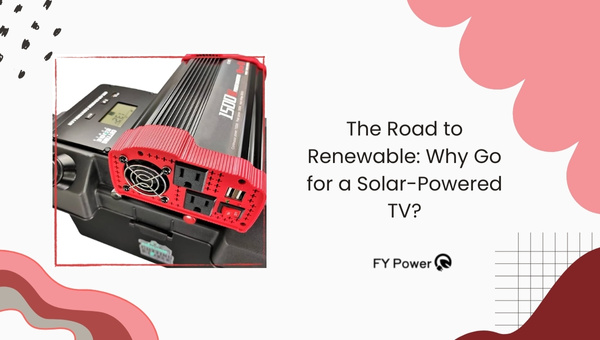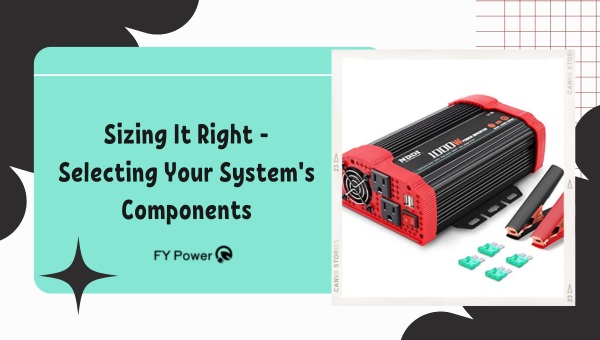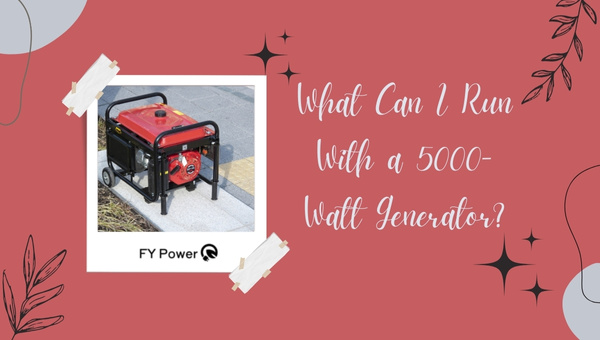Imagine a world where you no longer need to worry about costly electricity bills merely for using essential appliances, like your television. The era of clean, renewable energy is upon us, with solar power leading the way. Using a solar-powered TV is not just eco-friendly, but also cost-effective and highly efficient in the long run.
The process of operating a solar-powered TV involves several parts and procedures that are relatively straightforward once understood. Begin by assembling all necessary components like solar panels, a battery, and an inverter into one cohesive system set-up.
A step-by-step guide Guide to Operating Your solar-powered TV will aid in mounting these components effectively for optimal performance.
What’s The Catch?
- Learn the basics of how a Solar-Powered TV operates
- Understand why making the switch to Green Energy Television matters
- Discover foolproof steps to successfully installing your own Solar TV System
- Insight on sizing up your system – from deciding if a 100-watt solar panel can run your TV to choosing the right battery size
- Dive into the world of powering television with Solar energy as an eco-friendly and cost-effective option
The Road to Renewable: Why Go for a Solar-Powered TV?
Embracing a solar-powered TV marks a significant stride toward sustainable living. It leverages the abundant energy of the sun, reducing reliance on conventional electricity and minimizing carbon emissions.

Operating off-grid, a solar TV is particularly beneficial in remote areas, providing access to information and entertainment while promoting eco-friendly technology.
Switching to renewable energy sources like solar power is super important. Here’s why:
- Good for the Earth: It does not hurt our planet because we get it straight from the sun!
- Saves Money: After you set up, you don’t pay much for the energy again.
- Everywhere Sun: You can find the sun almost anywhere, which means power almost anywhere too!
- No Noise: It’s very quiet. No loud sounds like some machines make.
- Keeps Going: Once you have it, it keeps working as long as there is sunlight.
Now, what’s this solar-powered TV? Well:
- It’s a TV that uses sunlight for power. Pretty neat, huh?
- It helps us use less electricity that might harm our world.
- As more people use them, we all help our planet together!
Also Read: Ultimate Guide to Solar Power a 12V Fridge
Parts & Tools Needed for Installing Your Solar-Powered TV
Installing a solar-powered TV requires specific parts: solar panels, a charge controller, a battery, an inverter, and cables. Tools for the setup include a drill, screwdrivers, and a wrench set.
Proper sizing of these components ensures efficient functioning, and safety equipment like gloves and glasses is essential to protect during installation.
Gathering the Components
For your solar-powered system for your TV, you’ll need:
- Solar Panels: These catch sunlight and turn it into power.
- Battery: This stores all that sunlight power so your TV can use it anytime.
- Inverter: This gadget turns sunlight power into a type of power your TV understands.
- Mounting Gear and Cables: Holds everything together and lets them talk to each other.
These parts are friends that work together so you can watch your favorite shows with sunshine!
Essential Tools
And about tools – make sure you have these:
- Screwdrivers – To tighten or loosen screws when fixing things in place.
- Wire Cutters – To snip those wires just right so they’re safe and tidy.
- Drill Machine (if needed) – Sometimes making holes for mounting things on walls needs this handy tool.
- Safety Equipment (like gloves and glasses) – Always important to protect yourself!
Also Read: What will a 10000 watt generator run?
Step-by-Step Guide to Powering Your TV with Solar Energy
Harnessing solar energy for your TV requires installing solar panels, connecting them to a charge controller, and storing power in a battery. The battery links to an inverter converting DC to AC, suitable for your TV.
This setup not only reduces your carbon footprint but also provides energy independence and can lower electrical
Step 1: Secure the Charge Controller and Fuse Holder
First things first, when I want to power my TV with solar energy, I know that a safe setup starts with the charge controller and fuse holder. Here is what I do:
- Find a Safe Spot: I pick a spot near the battery for these parts. It has got to be dry and safe.
- Mount Them Securely: Then, I use screws to fix them in place. They must not move or shake.
- Keep Open Space Clear: There should be some open space around for airflow. This keeps them from getting too hot.
Step 2: Making Connections – Battery Meets Charge Controller & 12V Socket
Next up, hooking up the battery with care is key. To do this right, here’s what you need to know:
- Turn Off Power: Before anything else, make sure all things are turned off – no power should flow!
- Connect Right Wires: Red wires are for positive (+), and black ones are for negative (-). Never mix these up.
- Check Twice: After connecting, double-check that everything fits snug and tight.
Step 3: Harnessing Sunlight – Linking the Solar Panel & Charge Controller
Putting together the solar panel and charge controller matters loads if you want good energy from sunlight:
- Right Position for Solar Panels: Choose where it gets the most sun throughout the day.
- Use Proper Cables: Cables linking panels to your charge controller have got to handle outdoor weather.
- Get Connectors On Tight: Make sure every connector clicks into place properly.
Step 4: Bringing It All Together – Inverter Links With Your Television Set
Finally comes connecting it all with my television set via an inverter:
- Pick Suitable Inverter Size – It needs enough watts for your TV and any other bits like DVD players or consoles.
- Ensure Correct Hook Up – The inverter’s output goes safely into your TV’s plug area much like normal wall plugging.
Also Read: 12V Battery Health Check: Uncover Your Battery’s Capacity
Sizing It Right – Selecting Your System’s Components
Selecting the right-sized components for a solar system is crucial for efficiency and cost-effectiveness. You need to calculate your energy needs, choose solar panels that meet these demands, a charge controller to regulate power, batteries for energy storage, and an inverter to convert DC to usable AC power.

Can a 100-watt Solar Panel Run a TV?
Now it’s time to think about how much juice my TV need. A simple breakdown looks like this:
- Smaller TVs (like ones under 32 inches) usually play nice with a 100-watt solar panel, but…
- Bigger TVs or those that use more tech might need more power.
It depends on how many watts my specific tele uses when working out what solar panel wattage is needed.
What Size Battery Will Keep You Binge-Watching?
To keep up on favorite shows without running out of power halfway,
- A small TV can work fine on smaller batteries but,
- Large televisions could mean needing large batteries so as not to get cut off during long watching times!
The golden rule – more hours of viewing need a bigger storage capacity! And remember always factor in the weather as cloudy days mean less sun feeding into those batteries!
FAQs
What are my options if I want an entirely off-grid setup?
If you’re considering an off-grid setup, invest in a complete solar power kit for your TV that includes solar panels, a charge controller, a battery bank, and an inverter. This will ensure your TV stays powered without the need for electrical grid access.
How does the weather affect my solar-powered TV setup?
Solar-powered systems rely on sunlight; therefore, cloudy or rainy days may reduce energy production. You should size your system with a good battery capacity to store enough power for such days.
Are there any maintenance tips I should know about?
Maintenance is key for performance. Regularly clean your solar panels to avoid dust accumulation that blocks sunlight. Check connections often and replace batteries every few years or as needed based on their cycle life.
Conclusion
Choosing to power my TV using solar energy was certainly a wise decision. It not only reduced my carbon footprint but also saved me money on electricity bills in the long run. Transitioning to a solar-powered TV system took some effort, but the benefits far outweighed the initial hassle of setting it up.
With each sunny day, I’m reminded of how harnessing clean energy contributes positively to the environment and leads us toward a more sustainable future.
Key Takeaway Points:
- Using solar power for your TV helps save on bills and reduce environmental impact.
- Gathering the right components is crucial for an effective setup.
- Proper installation ensures optimal performance and safety.
- Sizing your solar panel and battery correctly is key for continuous viewing pleasure.

